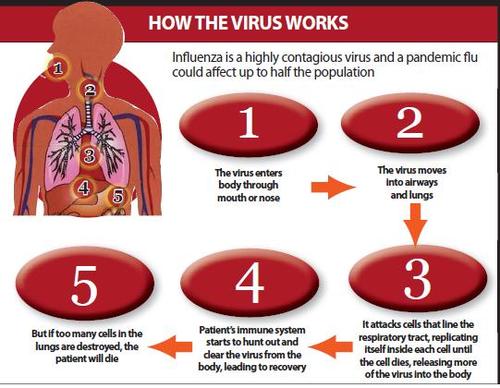
Australia dials down its pandemic alert statusIn the wake of an influenza season that was milder than last year’s, Australian health officials today announced a downgrade in the country’s pandemic phase from "protect" to "alert." Australia had been in "protect" status since Jun 17, 2009. the "protect" phase focuses on identifying and protecting people at risk for serious illness, while the "alert" phase involves increased vigilance for a new flu virus or a change in a circulating virus, the Department of Health Ageing said. "This is consistent with the WHO’s [World Health Organization's] recommendation to continue ongoing vigilance in the early post-pandemic period," the agency said. the WHO declared the world to be in the post-pandemic period on Aug 10, while cautioning that localized outbreaks were likely to continue. the Australian officials said they maintained the "protect" status at that time because their flu season was still under way and a late surge in 2009 H1N1 cases was still possible. the statement said the pandemic H1N1 vaccine would remain freely available until Dec 31, when all doses will reach expiration.Dec 1 Australian announcement
Pneumonia more severe in pandemic than in seasonal fluSpanish and Chilean researchers who compared pneumonia cases associated with 2009 H1N1 flu and seasonal flu found that H1N1 patients were younger and had more severe disease than seasonal flu patients, according to a report in the European Respiratory Journal. the authors gathered data on 75 consecutive patients treated at a hospital in Chile for pneumonia and H1N1 flu from May through July of 2009, and compared these cases with those of 52 patients treated for pneumonia and seasonal flu between 2003 and 2008, most of them consecutive patients at a hospital in Barcelona. the H1N1 patients were younger than the seasonal flu patients (mean age, 39.7 versus 69.6 years) and had fewer preexisting illnesses and a lower rate of alcoholism. the H1N1 patients had a 28% rate of respiratory failure, versus 12% for the seasonal flu patients, and the death rate in the H1N1 group was about twice that in the seasonal flu patients, although this difference was not statistically significant.Nov 25 Eur Resp J abstract
Poll finds risk groups underestimate flu threatNearly two thirds of Canadians who have chronic medical conditions don’t believe they are at greater risk for flu complications, according to survey findings released yesterday by the Ontario Lung Association. the results also revealed that 80% say they forego seeing their doctors, because they believe their symptoms are manageable and 70% don’t consult their physicians, because they assume that the only treatments are over-the-counter products. Dr Anthony D’Urzo, a family medicine professor at the University of Toronto, said in a statement that people with chronic conditions and flu-like symptoms should seek medical care quickly, because measures such as antiviral drugs can reduce complications and hospitalizations. the findings are based on an online survey of more than 1,000 people with chronic medical conditions that was conducted in October by Leger Marketing, according to Postmedia Network, a Canadian news service.Nov 30 Ontario Lung Association press releaseNov 30 Postmedia story
Study tracks H1N1 vaccine protection from moms to newbornsExpectant mothers who are were immunized against the 2009 H1N1 virus passed protective antibodies to their babies that lasted at least 5 months, according to Italian researchers who reported their findings today in a letter to the Journal of the American Medical Association (JAMA). the study includes 75 consecutive women from Milan in their third pregnancy trimester who received an intramuscular dose of MR59-adjuvanted 2009 H1N1 vaccine in October and November of 2009. Women’s blood samples were obtained at delivery, 2 months, and 5 months, and babies’ blood samples were drawn within 2 days of birth and at 2 and 5 months. Sixty-nine mother-baby pairs completed the study. All mothers had hemagglutination-inhibition (HI) titers that were considered protective during delivery and follow-up. Infants’ mean antibody titers at birth decreased progressively during the 5-month follow up. Transplacental antibody transfer was calculated to be 0.55, and the estimated half-life of passively acquired maternal 2009 H1N1 antibodies was estimated to be 83.4 days. the authors said that flu was circulating in Milan during the study period and that some of the participants could have been naturally exposed to the virus, but they said the chances were unlikely.Dec 1 JAMA extract
Russia reports good flu vaccination progressRussia’s top public health official today said 31.5 million people, just over 22% of the population, have received flu immunization so far, RIA Novosti, the country’s news service, reported. Gennady Onishchenko, chief sanitary doctor, said the vaccine campaign started in early October and has already been completed in 71 of Russia’s 83 regions. the federal government has paid for vaccines for 27.8 million (16.6 million adults and 11.2 million children) of those immunized so far, while employers have paid for the rest.Dec 1 RIA Novosti story